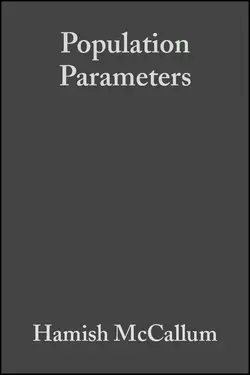Population Parameters

Hamish McCallum
Тип: PDF книга
Жанр: Зоология
Язык: на английском языке
Издательство: John Wiley & Sons Limited
Дата публикации: 25.04.2024
Отзывы: Пока нет Добавить отзыв
О книге: Ecologists and environmental managers rely on mathematical models, both to understand ecological systems and to predict future system behavior. In turn, models rely on appropriate estimates of their parameters. This book brings together a diverse and scattered literature, to provide clear guidance on how to estimate parameters for models of animal populations. It is not a recipe book of statistical procedures. Instead, it concentrates on how to select the best approach to parameter estimation for a particular problem, and how to ensure that the quality estimated is the appropriate one for the specific purpose of the modelling exercise. Commencing with a toolbox of useful generic approaches to parameter estimation, the book deals with methods for estimating parameters for single populations. These parameters include population size, birth and death rates, and the population growth rate. For such parameters, rigorous statistical theory has been developed, and software is readily available. The problem is to select the optimal sampling design and method of analysis. The second part of the book deals with parameters that describe spatial dynamics, and ecological interactions such as competition, predation and parasitism. Here the principle problems are designing appropriate experiments and ensuring that the quantities measured by the experiments are relevant to the ecological models in which they will be used. This book will be essential reading for ecological researchers, postgraduate students and environmental managers who need to address an ecological problem through a population model. It is accessible to anyone with an understanding of basic statistical methods and population ecology. Unique in concentrating on parameter estimation within modelling. Fills a glaring gap in the literature. Not too technical, so suitable for the statistically inept. Methods explained in algebra, but also in worked examples using commonly available computer packages (SAS, GLIM, and some more specialised packages where relvant). Some spreadsheet based examples also included.